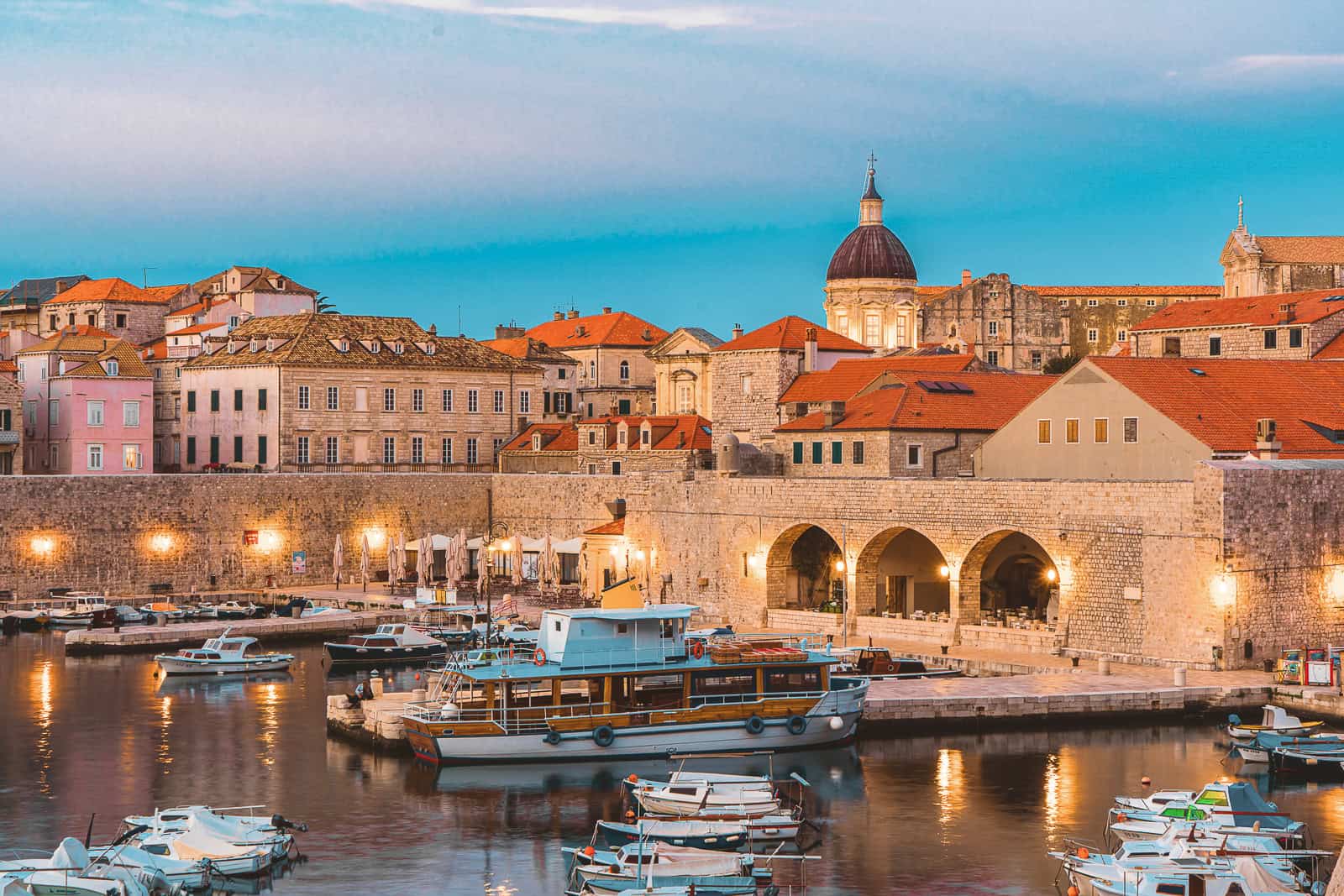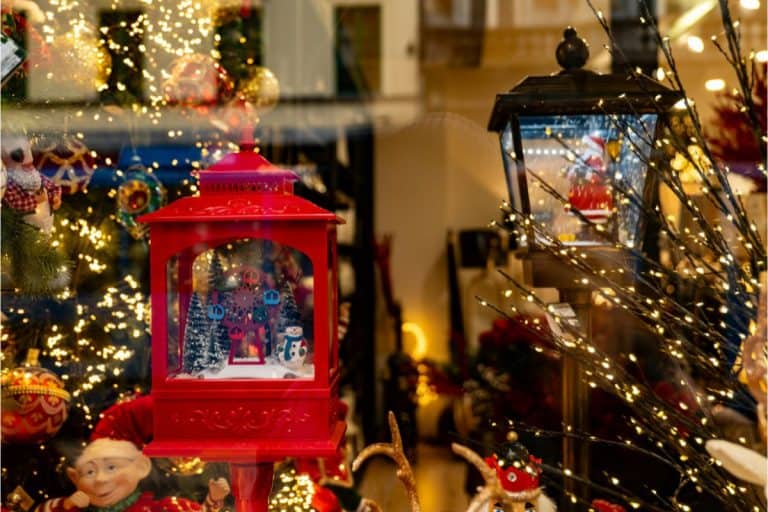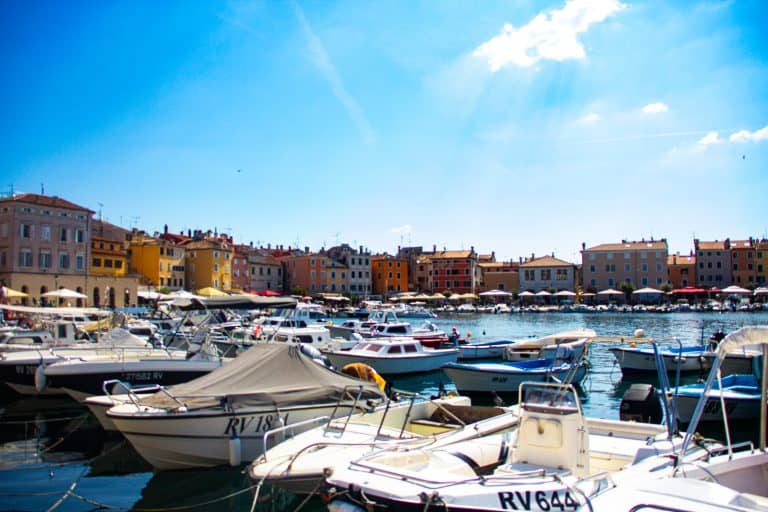Croatia in Spring: Complete Travel Guide for March to May

Need a reason to visit Croatia in spring? Keep reading!
Spring in Croatia is a great time to visit. It’s when the country is starting to awaken from its winter slumber. From the first hints of warmth in March to the perfect weather of May, these shoulder season months offer incredible value, fewer crowds, and some of the year’s most beautiful landscapes.
If your on the fence about whether you should visit Croatia in spring, we’re going to give an in-depth look at the reasons you should. We’ll also go over a few cons to consider when traveling at this time of year.
Plan Your Trip With Our Favorite Resources
– Best accommodation site: Booking.com
– Book day tours here: Viator.com

One Day in Dubrovnik: 5 Curated Itineraries for Every Travel Style
Dubrovnik is a must-visit city for anyone traveling to Croatia. If your time is limited and you’re wondering if you can see Dubrovnik in a day, the answer is yes! Check out our 5 custom itineraries!
READ MORE
Visiting Croatia in Spring
Spring in Croatia is a great time to visit. The weather starts warming up, flowers are blooming everywhere, and the beaches and old towns are still pretty quiet compared to summer.
Places like Plitvice Lakes and Krka National Park are especially stunning, with waterfalls in full flow and nature looking fresh and green.
It’s also when local markets and festivals start popping up, so there’s a nice mix of a relaxed atmosphere and local culture. All in all, it’s a great time to enjoy the country without the crowds.
March: Spring Awakens & Great Deals
March marks the beginning of the shoulder season in Croatia so this is a great time to visit for anyone looking for great travel deals.
It’s also an ideal time to explore major cities like Split and Dubrovnik, with mild weather and minimal crowds, perfect for visiting museums and top attractions.

Weather
Since March is the beginning of early spring in Croatia, milder temperatures will start to make their way in.
While the weather can still be unpredictable, especially in inland regions like Zagreb and the mountains, coastal areas such as Split and Dubrovnik begin to see more sunshine and slightly warmer days.
Rain is still fairly common, and chilly evenings continue throughout the country, but overall it’s more pleasant than in the previous winter months.
- Temperatures – Temperatures will average 8°C (46°F) to 14°C (57°F). Inland areas will still see colder temperatures than the coast with the potential of dropping near freezing.
- Rainfall – In March, rainfall will increase with inland areas seeing higher amounts than the coast. Averages range from 71-99mm (2.8 to 3.9 inches).
- Wind – The coast will still see bura winds throughout March. The winds can be fairly unpredictable so it doesn’t make for ideal boating conditions just yet.
- Sunshine Hours – There are around 6 hours of sunshine. This gradually increases throughout the month.
- Daylight Hours – Between 12 and 13 hours of daylight hours.
- Sea Temperatures – It’s still well outside beach season so water temperatures will average around 13°C (55°F).
Crowds
March is still considered part of Croatia’s shoulder season, which means the crowds remain relatively low compared to the busy summer months.
Places like Dubrovnik, Split, and Plitvice Lakes start to see more visitors as the weather gets nicer, but it’s far from peak season levels. This makes it an ideal time for travelers who want to enjoy popular attractions without the overwhelming crowds.
Some seasonal businesses and attractions may start to reopen after winter closures but the atmosphere is still quiet.
Events and Festivals
While March doesn’t have the large-scale celebrations of summer, you can still enjoy a variety of local traditions, music festivals, and art exhibitions.
There are also religious observances tied to Easter so it’s a nice time to experience local life before the peak tourist season begins.
- Festival of Lights, Zagreb – The Festival of Lights takes place over 5 days in Zagreb each year and it features light displays designed by artists from around the world.
- Mali Ston Oyster Festival – Coinciding with St. Joseph’s Day each year on March 19th, the Mali Ston Oyster Festival features oyster and wine tastings, lectures and live music.

Top Travel Tips For Visiting In March
March is a great time to visit Croatia if you’re looking for a quieter, more authentic experience with the first hints of spring in the air.
However, traveling in March does require a bit of planning, especially when it comes to packing for mixed weather and navigating limited off-season schedules. To help you make the most of your trip, here are some top tips for visiting Croatia in March.
What To Pack
- Layers – Even though March brings the first signs of spring, you’ll need to pack for varying weather conditions. Consider bringing clothes you can layer such as long-sleeved tops, sweaters and sweatshirts.
- Rain Gear – You’ll definitely want to bring a rain jacket since March is a transitional season. Showers are not uncommon at this time of year.
- Sunglasses & Sunscreen – Even though the temperatures aren’t at their peak, you’ll still want to protect yourself from the sun’s rays. Be sure to bring your sunglasses and sunscreen.
Where To Go
- Zagreb – If you want to immerse yourself in the culture, visit some of the larger cities in March. You can visit museums and other attractions without a lot of tourists. The majority of the people will be locals so it will give you a more authentic feel.
- Split – Enjoy a seaside atmosphere without the crowds.
- Dubrovnik – Savor the crowdless streets of Dubrovnik before the throngs of tourists arrive in late spring and summer.
- Istria – Sample local wines and olive oil and visit small seaside and hilltop towns.
Know Before You Go
- Check Ferry Schedules – Ferries will still be operating with reduced schedule. Check the schedules prior to booking your travel plans.
- Book Hotels In Advance – It’s still the off-season but with national holidays and festivals taking place throughout the month, consider booking your hotel in advance. Some hotels will still be closed so available rooms will be limited.
- Consider Renting A Car – With some public transportation still running less frequently, a car is a great option for getting to some of the inland areas or smaller towns such as Cavtat that are only serviced by ferries in the peak season.
April: True Spring & Blooming Landscapes
April is when everything starts to bloom again and cities and towns come to life. Spring is in the air with warmer temperatures but not too hot.
There are still few crowds so it’s an ideal time to explore some of the larger cities. You can still snag some great deals on flights and hotels as well since it’s well before the peak tourist season.
Overall, April offers a good value for the money if your main focus isn’t to visit beaches.

Weather
April is the true start of spring, bringing milder temperatures, longer days, and blooming landscapes across the country. Inland regions like Zagreb start to warm up, but nights can still be chilly.
Along the coast, cities like Split and Dubrovnik enjoy more sunshine and comfortable temperatures, which is great for sightseeing and outdoor activities. Rain is still possible, especially in coastal areas, but it usually doesn’t last long.
- Temperatures – Temperatures continue to gradually increase as spring arrives. They can range anywhere between 15°C (59°F) to 20°C (68°F) with inland areas cooler than the coast.
- Rainfall – Areas around the country will start to see a decrease in rainfall. Typically, the average will be 60-70mm (2.36 to 2.76 inches) for the month. There’s a potential for higher amounts further inland. The rain will be less constant with the likelihood of scattered showers as opposed to torrential downpours.
- Wind – Although the bura is still a factor in April, the intensity and frequency will decrease as the month goes on.
- Sunshine Hours – There are around 7 sunshine hours.
- Daylight Hours – April has around 13 hours of daylight hours.
- Sea Temperatures – Water temperatures will average between 14°C to 16°C (57°F to 61°F) for the month.
Crowds
April crowds will generally be light to moderate. Most of the people you will see will still be locals. Popular places like Dubrovnik, Split, and Plitvice Lakes begin to see more visitors, it’s still manageable.
Restaurants, tours, and ferries, start to reopen or increase their schedules, offering more flexibility without the hassle of peak-season lines. It’s an excellent time for travelers who want to experience Croatia with a bit more energy but still have plenty of breathing room.
Events and Festivals
April sees an uptick in the number of festivals and other events. Cities host spring concerts, art exhibitions, and outdoor markets as the weather warms up and places like Istria host seasonal events centered around different types of food delicacies.
- Zagreb Music Biennale – This international music festival takes place in Zagreb each year. Artists come together to celebrate contemporary music through performances.
- Aklapela Festival – This festival celebrates traditional klapa singing which is a form of a capella singing. It originated in the southern Dalmatia region and is a on the list of Intangible Cultural Heritage of Humanity. The festival also includes traditional a cappella singing. Various groups from around the country gather to perform.
- St. George’s Day – This festival honors St. George and takes place in several cities throughout the country on April 23rd. The event is marked with parades, costumes, music and fireworks.
- St. Mark’s Festival- April 25th is a day to celebrate the patron saint St. Mark. This festival takes place in Zagreb with concerts, performances and church services.
- Asparagus Festival- Istria is known for its unique culinary dishes so it’s no surprise that this is where you can attend the asparagus festival which allows visitors to enjoy amazing dishes prepared with asparagus.

Top Travel Tips For Visiting In April
April is a fantastic time to visit Croatia. It offers a perfect mix of pleasant spring weather, blooming landscapes, and fewer crowds.
More attractions, restaurants, and ferry routes begin to open, giving travelers greater flexibility without the intensity of peak season.
However, April can still bring unpredictable weather and holiday-related closures, so a bit of planning goes a long way.
What To Pack
- Layers – You definitely want to pack layers if visiting in April. Even though the days can warm up nicely, the nights and early mornings can still be fairly cold.
- Rain Gear – We suggest bringing a rain jacket since April usually sees scattered showers. An umbrella and rain boots might not be a bad idea either.
- Hiking Boots – If you plan to visit some of the national parks, be sure to pack a good pair of hiking boots. Many of the trails may still be muddy due to recent snow melt.
- Sunglasses & Sunscreen – You should definitely bring sunglasses and sunscreen since the days will be brighter and warmer.
Where To Go
- Zagreb, Split & Dubrovnik – April is a fantastic time to take advantage of fewer crowds by visiting the top sites in the larger cities such as Split, Zagreb and Dubrovnik.
- Istria – Known for its wine and truffles, Istria is also home to romantic seaside towns and small medieval towns. April is a perfect time to visit when the hilltops are in bloom.
- Plitvice National Park – With everything starting to bloom in April, it’s the perfect time to visit some of the national parks. Plitvice National Park is an especially popular choice since the waterfalls will be flowing heavily at this time of year.
- Nearby Islands – If you’re not into beaches but you’d still like to explore some of the nearby islands, this is a nice time to go. It won’t be beach weather but the temperatures will be comfortable for exploring. The lack of tourists will ensure a quiet and relaxing visit.
Know Before You Go
- Reduced Ferry Service – Ferries may not have returned to their normal operating schedules so it’s best to check their schedules prior to your visit.
- Closed Hiking Trails – If you plan to hike, check the news for the various parks prior to arriving. Snow melt at this time of year can affect some trails so some trails may be closed.
- Hotel and Restaurant Closures – Some hotels and restaurants may not have reopened yet so make reservations in advance especially for the more popular ones.
May: Perfect Weather & Shoulder Season Sweet Spot
May is one of the best times to visit Croatia. It offers warm spring weather, lush green landscapes, and an increased energy without the peak-season crowds.
The days are longer and warmer so it’s an ideal month for exploring cities, hiking national parks, and even enjoying the early beach season along the coast.
Tourist services are in full swing by now, but popular destinations like Dubrovnik, Split, and Plitvice Lakes are still much less crowded than in summer.

Weather
May brings some of the nicest weather of the year in Croatia, so it’s an ideal time for outdoor activities and sightseeing.
Along the coast, in places like Dubrovnik, Split, and the islands, there’s plenty of sunshine and relatively low humidity. Inland areas also also enjoy warm, comfortable days, although evenings can still be a bit cool.
Rain is possible but usually short-lived. May is perfect for travelers looking to explore without the summer heat.
- Temperatures – Temperature-wise, May is a fantastic time to visit. You’ll see average temperatures of 17°C (63°F) to 24°C (75°F).
- Rainfall – Rain is more likely to occur inland in May. The coastal region will be drier and sunnier.
- Wind – The bura is still around in May though it’s not as pronounced. There may be gusts from time to time but skies will generally be clear.
- Sunshine Hours – May has around 8 hours of sunshine per day.
- Daylight Hours – There are between 14-15 hours of daylight hours.
- Sea Temperatures – Water temperatures continue to rise with average temps of 18°C to 20°C (64°F to 68°F) in May.
Crowds
May is considered shoulder season in Croatia, which means you’ll enjoy a lively but still relatively relaxed atmosphere. Tourist numbers start to increase especially in popular places like Dubrovnik, Split, and Plitvice Lakes but it’s still manageable.
Restaurants, museums, and ferries are fully operational by this point. Beaches are still much quieter so it’s a great time for anyone that wants to experience Croatia’s seaside towns and islands before the peak season.
Events and Festivals
May is the start of Croatia’s major event season. There are festivals and cultural events that take place across the country.
Coastal towns and islands begin hosting local celebrations and regattas, especially as the sailing season kicks off. Wine lovers can enjoy open cellar events in regions like Istria and Dalmatia, showcasing local vintages and traditional food. Here are just a couple of notable events.
- Sea Star Festival: The Sea Star Festival takes place in Umag in late May and features performers of rock, pop and other music genres across multiple stages.
- Adventure Race Croatia: The Adventure Race Croatia takes place over 500 km across the country and includes kayaking, biking, running and more.

Top Travel Tips For Visiting In May
By May, more ferries are running and attractions are fully open, so it’s the perfect month for both coastal and inland explorations.
Since May is on the edge of peak season, a little planning can go a long way. Here are some essential travel tips for visiting Croatia in May.
What To Pack
- Layers – During the day, you’ll want to dress in layers. A light jacket or sweater will be ideal for early mornings or evenings when it will get a bit cooler.
- Comfortable Walking Shoes – If there’s one thing you’ll do in Croatia, it’s a lot of walking. Be sure to bring your most comfortable shoes!
- Rain Gear – Some parts of Croatia will still be subject to some scattered showers. Be sure to bring a rain jacket or umbrella.
- Sunglasses & Sunscreen – An increase in sun means an increased chance of burning. Don’t forget your sunglasses and sunscreen!
Where To Go
- Dubrovnik – Dubrovnik is getting busier by now and there will be some cruise ships arriving. However, it won’t be nearly as busy as it will be in July and August. It’s still a nice time to enjoy the iconic sites of the city.
- Istria – This is a perfect time to visit Istria. By this time, the restaurants and vineyards have reopened. The atmosphere is much more relaxed and you’ll find mostly European travelers at this time of year.
- Hvar, Korčula, and other islands – The ferries will have returned to regular service so it’s a nice time to explore the many islands before the cruise ships and yachts arrive in June.
- Plitvice Lakes & Krka National Parks – The parks are beautiful in May and the weather will be ideal for exploring. Your best bet is to visit earlier in the morning or later in the afternoon if possible.
Know Before You Go
- Book in Advance – Although it’s not peak tourist season, we suggest booking key activities and accommodations in advance. This is especially important for popular tourist spots like Dubrovnik and Hvar.
- Visit the Islands – This is the ideal time to enjoy the islands before the throngs of tourists arrive. Restaurants and hotels will be fully open and ferries will be back in service.
Why Spring is Special in Croatia
Spring offers unique advantages that make it one of the best times to visit. Temperatures are starting to warm making it comfortable for exploring, crowds haven’t yet made their way back to the seacoast and services are slowly starting to reopen.
While it’s probably still too cold for swimming in March and April, by May it starts to warm up a bit, at least for the bravest of souls.
For those whose primary focus is to explore rather than lounge by the sea, this is a perfect time to visit. Here’s a quick breakdown of the things that make spring a great time to visit Croatia.

Perfect Balance
- Warm enough for comfortable sightseeing but not oppressively hot
- Tourist services fully operational but crowds still manageable
- Great value with shoulder season pricing
Natural Beauty
- Blooming landscapes and lush green hillsides
- Waterfalls at their most powerful from snow melt
- Perfect light for photography
Cultural Immersion
- Mix of locals and tourists creates authentic atmosphere
- Spring festivals and celebrations
- Outdoor dining and café culture emerges
Still Not Sure About Visiting Croatia in Spring?
While spring is a great time to visit Croatia, it may not meet everyone’s expectations especialy if you’re hoping for beach weather.
Deciding when to travel is a huge decision so you want to make sure you have all the information. Check out our other posts about traveling to Croatia at other times of the year.
FAQs
If you need more information about visiting Croatia in spring, here are answers to some additional frequently asked questions.
Is spring a good time to visit Croatia?
Spring is a nice time to visit Croatia since the weather is starting to become more pleasant and the peak summer crowds haven’t yet arrived.
Can I swim in Croatia in April?
April is still early in the spring season so the water temperatures will typically be too cold for swimming.
Is it better to visit Croatia in March or April?
There are benefits to visiting in either March or April. In March, there will be very few crowds and prices for accommodations will be much cheaper. If you visit in April, the weather will be more pleasant and everything should be starting to bloom.
In a Nutshell: Croatia in Spring
While spring may not be the ideal time to visit for those looking for beach time, it’s perfect for activities such as hiking, biking and exploring.
The crowds of summer have yet to arrive so the seaside towns and national parks offer a peaceful escape.
Whether wandering the cobblestone streets of Dubrovnik, exploring the waterfalls of Plitvice Lakes, or relaxing along the Adriatic coast, visitors who experience Croatia in spring will experience the true Croatia.









